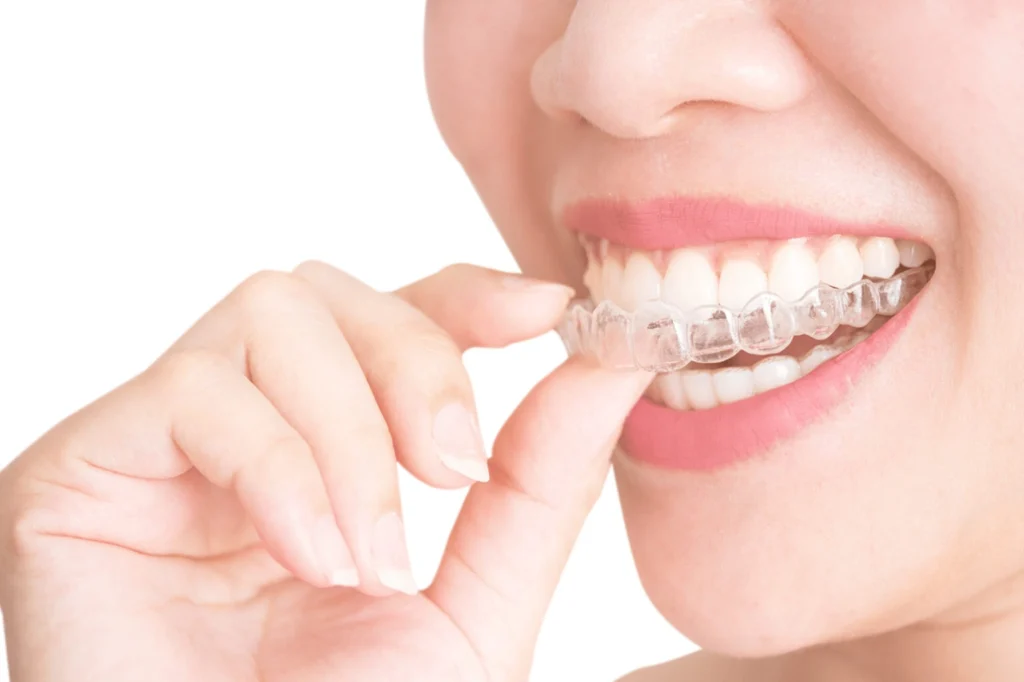Best Aftercare Tips for Clear Aligners

Immediate Aftercare
1. Follow Your dentist’s Instructions
Your orthodontist will provide specific instructions on how often to wear your clear aligners, typically 20–22 hours a day. Adhering to this schedule is crucial for achieving the desired results within the expected timeframe.
2. Adjusting to Clear Aligners
It’s normal to experience some discomfort or pressure when you first start wearing clear aligners. This is a sign that they are working. Over-the-counter pain relievers can help manage any discomfort during the initial adjustment period.
Cleaning Your Retainer
1. Daily Cleaning Routine
Clean your retainer daily to prevent the buildup of plaque and bacteria. Use a soft-bristled toothbrush and mild soap or non-abrasive toothpaste. Avoid using hot water, as it can warp the retainer. Rinse thoroughly with cool water after cleaning.
2. Deep Cleaning
Perform a deep cleaning at least once a week. Soak your retainer in a denture cleaner or a mixture of water and vinegar for 15–20 minutes. This helps remove any stubborn buildup and keeps your retainer fresh and odor-free.

Oral Hygiene
1. Maintain Good Oral Hygiene
Brush your teeth at least twice a day and floss daily. Proper oral hygiene prevents plaque buildup on your teeth and retainer, reducing the risk of cavities and gum disease.
2. Regular Dental Check-Ups
Continue to visit your dentist regularly for check-ups and professional cleanings. Your dentist can monitor the health of your teeth and gums, ensuring your retainer is working effectively.
Eating and Drinking
1. Remove Aligners While Eating
Always remove your aligners before eating to prevent damage and avoid trapping food particles. Store them in their protective case during meals to keep them safe.
2. Avoid Staining Beverages
Clear aligners can stain easily. Avoid consuming coffee, tea, red wine, and other staining beverages while wearing your aligners. If you do consume these drinks, rinse your mouth and clean your aligners afterward.
Lifestyle Tips
1. Protect Your Aligners
Keep your aligners away from pets and young children, as they may chew on them. Avoid placing them in your pocket or anywhere they might get bent or broken. Always use the protective case when not in use.
2. Stay Hydrated
Drinking plenty of water helps rinse away food particles and bacteria, keeping your mouth and aligners clean. Staying hydrated also prevents dry mouth, which can lead to bad breath and oral health issues.
Long-Term Care
1. Transitioning to New Aligners
Follow your orthodontist’s schedule for transitioning to new sets of aligners. Usually, this involves switching to a new set for two weeks. Make sure to clean and store old aligners in case you need them as a backup.
2. Using Retainers Post-Treatment
If you notice any signs of damage to your retainer, such as cracks, warping, or loose wires, contact your orthodontist immediately. A damaged retainer may not fit properly, reducing its effectiveness.
When to Contact Your Dentist
1. Signs of Damage
If you notice any signs of damage to your dentures, such as cracks, chips, or changes in fit, contact your dentist immediately. Damaged dentures can cause discomfort and affect their function.
2. Discomfort or Pain
If your retainer causes discomfort or pain, schedule an appointment with your orthodontist. Adjustments may be necessary to ensure a proper fit and prevent any issues.
Conclusion
For more information on our dental services, schedule an appointment through https://nationalmed.ae or visit our clinic.

